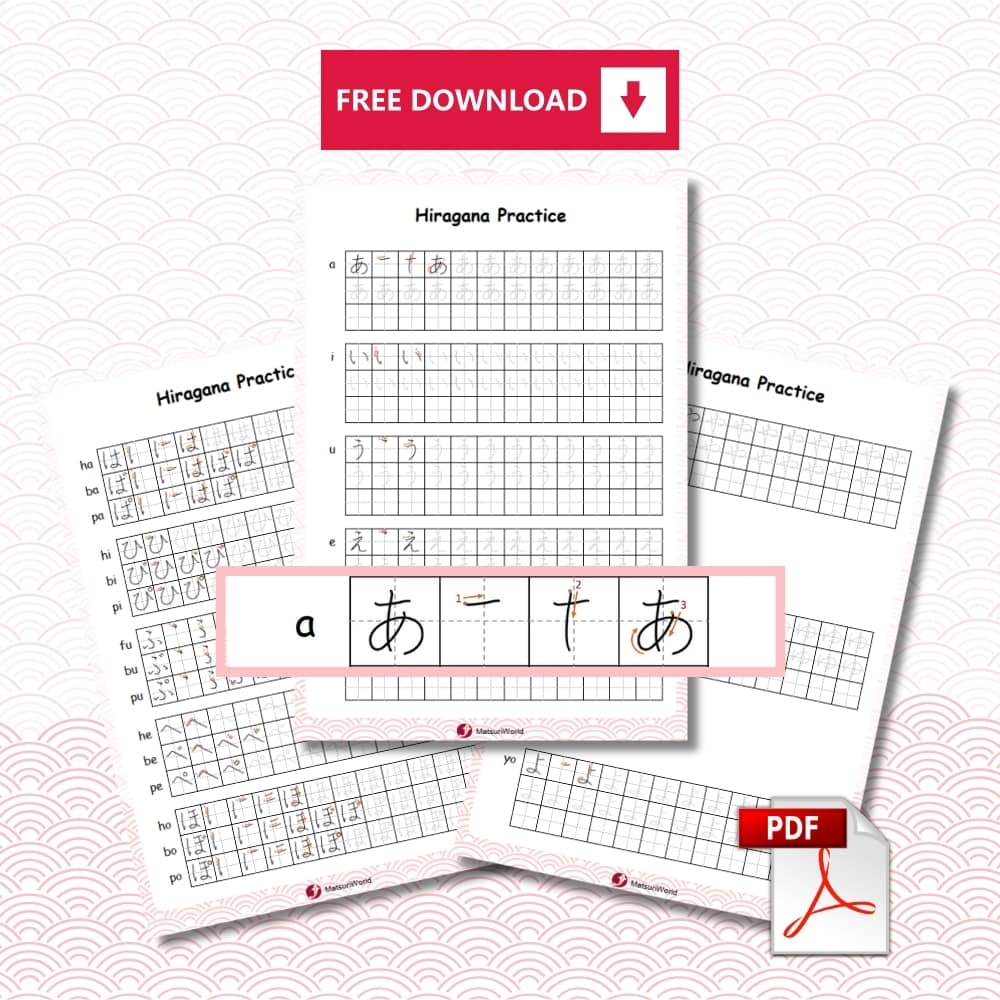Learning Hiragana stroke order is one of the most fundamental steps in mastering the Japanese language. While Hiragana might seem like just a set of simple symbols, each character has a defined way it should be written. Proper stroke order is not just about tradition; it enhances readability, accuracy, and even writing speed. In this article, we’ll cover everything you need to know about Hiragana stroke order, including why it matters, how to practice, and tips to avoid common mistakes.

What Is Hiragana? The Foundation of Japanese Writing
Hiragana is one of the three main scripts used in Japanese, alongside Katakana and Kanji. It consists of 46 basic characters, which represent syllables rather than individual sounds or letters. Hiragana is the first script taught to children in Japan and is widely used in everyday writing, especially for grammatical particles, verb endings, and words without Kanji representation.
Unlike the complex logograms of Kanji, Hiragana is simpler and more approachable, making it a perfect starting point for language learners.
Why Is Stroke Order Important in Hiragana?
Proper stroke order plays a significant role in mastering Hiragana. Here’s why:
- Improved Legibility: Writing with correct stroke order ensures that your characters are recognizable and clear, even when handwritten.
- Efficiency: Following the prescribed stroke order allows for smoother and faster writing.
- Consistency: Japanese teachers and natives expect Hiragana to be written uniformly. Incorrect stroke order may lead to confusion.
- Cultural Respect: Adhering to traditional writing practices shows an understanding and respect for Japanese culture.
How Hiragana Differs from Katakana and Kanji
To fully appreciate Hiragana, it’s important to understand how it contrasts with other Japanese scripts:
- Katakana: Used primarily for foreign words, onomatopoeia, and emphasis, Katakana has a blockier appearance than Hiragana.
- Kanji: Complex characters borrowed from Chinese, used for nouns, verbs, and adjectives. Unlike Hiragana, Kanji focuses heavily on meaning rather than phonetics.
Hiragana’s simplicity and phonetic nature make it indispensable for beginners.
General Rules for Writing Hiragana Stroke Order
When writing Hiragana, a few universal principles apply. Let’s break them down:
Rule 1: Top to Bottom
Most Hiragana strokes are written starting at the top and moving downward.
Rule 2: Left to Right
Horizontal strokes and left-side components are written first before moving to the right.
Rule 3: Horizontal Lines Before Vertical Strokes
Horizontal strokes often precede vertical ones for smoother flow.
Common Exceptions
While most Hiragana follow these rules, a few characters (like ん) may deviate slightly. Always consult a reliable guide for details.
A Step-by-Step Guide to Hiragana Stroke Order
Writing Basic Hiragana Characters: A-I-U-E-O
Let’s start with the first five characters:
How to Write あ (A)
- Begin with a short vertical stroke.
- Add a curved horizontal line, connecting to the vertical stroke.
- Finish with a circular loop.

How to Write い (I)
- Write two diagonal strokes starting from top left to bottom right.

How to Write う (U)
- Start with a vertical stroke.
- Add a small curved line.

How to Write え (E)
- Start with a horizontal line.
- Add a small vertical stroke.
- Finish with a hook-like stroke.

How to Write お (O)
- Begin with a vertical stroke.
- Add a smaller curved line.
- Finish with a circular stroke.

Tools and Resources to Learn Hiragana Stroke Order
Practice Sheets for Beginners
Downloadable PDFs with grids and stroke guides are a fantastic way to start practicing Hiragana.
Mobile Apps and Websites
Apps like “Hiragana Quest” and “Kanji Study” offer interactive tools for learning stroke order.
Using AI Tools
Platforms like Google Lens or AI writing apps can help analyze your Hiragana strokes and provide feedback.
Common Mistakes When Learning Hiragana Stroke Order
Overlooking the Importance of Proper Stroke Direction
Skipping this step can lead to poorly shaped characters.
Rushing Through Practice
Consistency is more important than speed. Practice slowly and deliberately.
Relying on Typing
Typing in Japanese is convenient but doesn’t help you internalize stroke order.
Benefits of Mastering Hiragana Stroke Order
- Improved Legibility: Ensures your writing is clear and professional.
- Stronger Foundation: Essential for advancing to Katakana and Kanji.
- Cultural Insight: Connects you with Japanese traditions.
Frequently Asked Questions
Why does stroke order matter in Japanese writing?
Stroke order ensures clarity and consistency, especially when handwriting.
Can I learn Hiragana without focusing on stroke order?
It’s possible but not recommended. Correct stroke order lays the foundation for future writing.
Are there exceptions to Hiragana stroke order rules?
Yes, some characters like ん have unique patterns.
What are the best tools to practice Hiragana stroke order?
Apps like “Hiragana Quest” and worksheets are excellent resources.
How long does it take to master Hiragana stroke order?
With consistent practice, it can take 2–4 weeks to master.
Does poor stroke order affect my ability to write in Japanese fluently?
Yes, improper stroke order can hinder your handwriting clarity and speed.
Mastering Hiragana stroke order is essential for anyone serious about learning Japanese. Not only does it ensure legibility and speed, but it also demonstrates respect for Japanese culture. With the right tools, consistent practice, and attention to detail, you can confidently write Hiragana and take your Japanese language skills to new heights!
